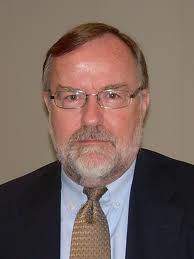OAH’s continuing efforts to chill participation
June 28th, 2011
You may remember prior posts about that but I’ll start from the beginning and try to make it quick. There’s a pattern at the Office of Administrative Hearings that is disturbing…
Way back on the MinnCan pipeline, members of U-CAN had tried to intervene and were refused. They got late notice and were not represented, stumbling through the administrative process pro se. MPIRG showed an interest and started working on it, among other things, submitting a Petition for Intervention:
Despite the late notice and their attempts to “work within the system,” the Petition of MPRIG individual U-CAN members was denied:
And when they appealed, they were tossed out, as if they had not even tried to intervene:
So when CapX 2020 hit, and they filed a Certificate of Need and landowners learned it wasn’t just the pipeline, but now transmission TOO (how much can a landowner stand?) they got right to it, and intervened as United Citizens Action Network (U-CAN), participating pro se as they had no resources to hire an attorney and were in condemnation and appellate court at the time. They Petition, and were admitted as full parties. So what happens?
Judge Heydinger, the same ALJ in the CapX Certificate of Need case as in the MinnCan pipeline case, files sua sponte (on her own initiative, not a Motion brought by parties) a demand that they explain why they, and the Prairie Island Indian Community, should remain intervenors:
This had been done before in the Excelsior Energy Mesaba Project siting docket, where ALJ Steve Mihalchick booted out Xcel Energy, Minnesota Power, and my client, Public Energy – Mesaba, because no testimony had been provided:
This docket went forward, there were two days of hearings, first in Taconite, where ALJ Mihalchick rammed through 4 witnesses and where we weren’t provided adequate opportunity for questioning, and, I swear, when I tried to get a table, he said, “Whatever would you need a table for?” Really… after much hassle, Bill Storm of Commerce found one (thank you!!). Since that day, I bring my own. Anyway, the second day, it was -30 in Hoyt Lakes and the hearing was in the unheated gym next to the hockey rink.
That day, Judge Mihalchick rammed through … what… 16 witnesses?… in one day, and left saying, “I’m not coming back here.”
Travesty doesn’t begin to characterize that hearing. And worse, Excelsior Energy got a permit for a vaporware project:
Fast forward to 2011, where ALJ Heydinger has now again issued a similar Order to Show Cause regarding two intervenors, Energy Cents and Verso Paper:
Here’s Verso Paper’s response:
Just filed: Order Confirming Party Status – Verso Paper
Where’s the Energy Cents Coalition?
Anyway, I’ve submitted a Rulemaking Petition to OAH about Minn. R. Ch. 1400 & 1405 to try to address some of this. We shall see…
Time to change channels…
June 3rd, 2010
It’s all been happening over at NoCapX 2020 — there’s exciting news to publish here on other things, but no time until after tomorrow at 4:30!!
Go to NoCapX 2020!
December 11th, 2009
I know, there’s nothing here!! That’s because everything is happening the last two weeks at NoCapX 2020! We’ve been having transmission line hearings all across southern Minnesota, and there’s not much time for anything else. So do check out the NoCapX site… there are a few tidbits piling up, but it’ll be a while before I get to the inbox!
The GALL of GRE’s Kaul!
April 30th, 2009
Will Kaul, VP of GRE, let loose in response to David Morris’ opinion piece a few days ago. What a doozy! How dare he! Talk about out of touch with reality! Maybe he’d better ask a few of the thousands who showed up and commented on this insane series of transmission projects across Minnesota known as CapX 2020.
You can call him and tell him what you think. Will Kaul @ GRE (763) 241-2380!
Will Kaul: Citizens have plenty of input on utilities
The facts on three new power lines came out in dozens of public events.By WILL KAUL
Last update: April 30, 2009 – 11:05 AM
The above quote, “to be a formal intervener, an individual or group simply had to sign up,” is false, and the utmost in arrogance. Kaul … read more sure wasn’t at the CapX proceeding that I was at, and it looks like he hasn’t read the transcript. If he had, he’d know that a couple weeks into the hearing, the judge issued an Order to Show Cause to two intervenors, the Prairie Island Indian Community and United Citizens Action Network to explain why they shouldn’t be booted out! Prairie Island Indian Community said they’d withdraw and maybe intervene in the siting docket. U-CAN, landowners in the route corridor, succinctly told the judge they had every right to be Intervenors, there were no requirements for level of participation, and btw, they were in the middle of condemnation proceedings for the MinnCan pipeline (another of her dockets and recommendations!) and didn’t have resources to do much in CapX. The judge then graciously allowed them to remain in the proceeding. nocapx2020.info/?p=324 Electric use is down, down, hence NoCapX 2020’s Motion to Reopen (November and last month), and soon, Motion for Reconsideration and then appeal. The forecasts are old, 2004-2005, and Xcel admits in its SEC filings that 2007 and 2008 saw declining beaks, SIGNIFICANTLY declining peaks, over 11% in just two years rather than their 2.49% increase, 1.5% increase, or whatever other number was dreamed up for the occasion. Those two years alone push any claimed need for this project way out there in time. And even if there was the “need” that they claim, the physical conductor is way over-spec’d, many many times what’s necessary for even the most generous forecast, and then they have the nerve to upsize it, doubling it, with zero justification! “The PUC upheld the recommendation of the judge…” Of course, they’re supporting MISO’s economic dispatch, rather than ratepayer interests, rather than the public interest. It’s time for a shake-up, not the usual shake-down. Yes, the many pages of transcripts, testimony, exhibits reflect the facts, but the ALJ recommendation and PUC decision do not reflect those facts or the purpose and reality of CapX 2020. From the utility squeals, it’s clear David Morris hit a nerve by being right on target.
An April 24 opinion piece by David Morris (“If it’s citizens vs. utilities, utilities win”) criticized the process state regulators use to review and approve new transmission lines and questioned whether Minnesotans had an opportunity to participate in the recent proceedings concerning three 345-kilovolt lines proposed by CapX2020, a group of 11 utilities.
The piece also made a rather bizarre comparison between sports stadiums and electric transmission lines. Electricity is an essential service that every Minnesotan depends on 24 hours a day, seven days a week.
The state regulatory process encourages public participation. It requires an independent review to ensure that utilities’ plans undergo a thorough and comprehensive vetting.
In the CapX2020 case:
•The Minnesota Department of Commerce held 10 public meetings, and an administrative law judge held 19 public hearings. Any interested citizen could attend and speak.
•To be a formal intervener, an individual or group simply had to sign up.
•The utilities hosted more than 100 public meetings and made more than 150 public presentations about the projects.
Following that extensive review, the Minnesota Public Utilities Commission voted unanimously that the three lines are needed. The decision upheld the recommendation of an administrative law judge, who reviewed thousands of pages of testimony and public comments and conducted seven weeks of evidentiary hearings and three weeks of public hearings.
Among the points the utilities made:
•Since the last major transmission system upgrade in Minnesota 30 years ago, much has changed. Electricity consumption has doubled, as has the number of electricity customers. Communities such as St. Cloud, Alexandria, Rochester and the Twin Cities have experienced significant growth and are facing serious electricity reliability issues.
•Despite today’s economic slowdown, electricity use is projected to continue growing, particularly peak electricity use.
•The transmission system must be designed to withstand the loss of one line by instantaneously transferring power to other lines.
•Minnesota has the most aggressive renewable energy standard in the country, requiring that 25 percent of electricity be from renewable sources by 2025. The Buffalo Ridge in southwestern Minnesota is one of the country’s greatest wind resources. Transmission lines are required to move that energy to customers.
The CapX2020 transmission lines aim to ensure that Minnesota communities continue to enjoy reliable electricity service and that the state’s renewable-energy mandate is met. The regulatory process aims to ensure that citizens have a say in determining whether the lines are needed and where they should be routed.
Will Kaul is vice president of transmission for Great River Energy and is chairman of the CapX2020 organization.
CapX 2020 Certificate of Need at PUC
April 13th, 2009
This is a big week at the Minnesota Public Utilities Commission. They’re going to hear our arguments and decide whether CapX 2020 transmission, Phase I, is “needed” or not… a lot is riding on this, the direction of Minnesota’s energy future. Will we be doing it differently, or will we be stuck in the same central station coal scenario?






